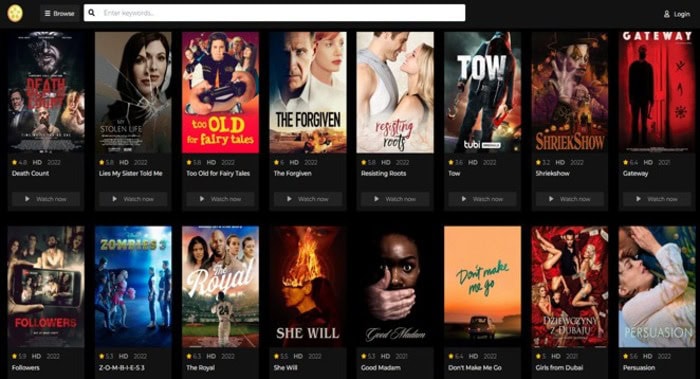
At the end of 2020’s third quarter, The Internet World Stat reveals that 51.8% of internet users are Asian. However, the statistics also show that 60.4% of all websites use English as their content language. As a website owner, take advantage of this situation by providing a multilingual WordPress site to get your business to shine.
A multilingual site is a website that uses more than one language on both its content and pages. By making your website accessible for non-English speaking users, you can earn more trust and beat your competitors.
In this blog post, you’ll learn how to create a multilingual WordPress site and how you can benefit from it.
1. Set Up Your WordPress Site
Before getting started, here’s a checklist to help your website translation-ready:
- Choose a reliable hosting provider. Some of the key factors for a successful site are uptime, speed, and storage. Therefore, conduct thorough research before deciding to go with a WordPress hosting service.
- Install WordPress. Most WordPress hosting services come with one-click WordPress installation. Thus, you can get your site ready hassle-free.
- Use a translation-ready theme. As you won’t only translate your content but also your website’s menus, ensure you choose a translation-compatible theme. Most of the time, the theme description will tell you if it’s translation ready. Or, you can check if it uses .pot, .po, or .mo extensions.
When you’ve marked all those three done, you can get to work and publish your first content.
2. Choose a WordPress Plugin to Work With
To make the translation process more comfortable, you can install translation plugins. Some of the popular ones include TranslatePress and WPML.
Some of the other translation optimization features include image translation, block translation, and automatic translation. Some translation plugins also support WooCommerce. Therefore, if you use WooCommerce for your online business, translating content that comes with it will be no problem.
3. Choose the Language
Before translating, decide which languages you want to translate your content into. Also, ensure that you choose only the languages you need based on your target audience.
Suppose you haven’t set any target audience, do it now. Based on the 2020’s Q1 survey, 74.1% of all internet users don’t speak English. Thus, you should find out which language these users use most widely. With this strategy, you can target your prospects more specifically.
To configure the languages, you can go to ‘Setting.’ There, you can select your site’s content language default and the language you want to make accessible. However, some translation plugins also allow you to add two or more languages.
4. Configure the Language Switcher
Most translation plugins come with a language switcher default. However, you can also choose how you would like to display your language switcher on the ‘Setting’ menu.
Here are several types of switchers that most translation plugins comprise:
- Seeing a ‘French’ or ‘Chinese’ button can get visitors to tell that your site provides the language.
- Language codes. Flags or country abbreviations can also be great switchers to help your visitors tell which language your site provides.
- Drop-down menu items. This type of switcher works best if you have a long list of languages.
- This model uses geotargeting to detect where your visitors are so that it can offer the most appropriate language for them through a notice.
5. Start Translating
Once you’ve done with the plugin configuration, go to your WordPress admin page. On the toolbar, you will see the ‘Translate Page’ menu.
Next, you have to choose the content to translate. Depending on your chosen translation plugin, you can auto-translate your content or translate it manually with the help of a translation editor that your plugin packs.
When translating, don’t forget to do it to your website menu, themes, and plugins too. Also, set translations to taxonomies so that they appear consistent in your content.
Benefits of Having a Multilingual Site
If you’ve been finding ways to improve the user experience, getting your site to support your visitors’ languages is a great way to achieve it. To convince you even more, here’s a list of other multilingual site benefits.
Reach a Global Audience
Getting your website a multilingual capability can open up new paths for you to reach a wider audience at the global level. As you’ve overcome the language barrier problem, you can improve visitors’ satisfaction and the consumer’s experience.
Increase Conversion Rates
Based on the latest CSA research of 8709 worldwide’s online shoppers, 76% of the respondents prefer to buy products in their native languages. Moreover, 40% of them will never buy from websites of other languages.
From the statistics above, we can conclude that providing your target consumers’ languages to your site ensures smoother transactions. Therefore, get your site a multilingual capability if you want to increase sales and reduce cart abandonment rates.
Show Customer-Centric Values
A good business is the one that can get its customers to feel seen and appreciated. To achieve this goal, lots of companies implement personalized marketing.
One of the easiest ways to apply it is by providing a version of your website in your target market’s language. When a visitor recognizes that he can read your site in his language, it’ll leave a lasting positive impression on your brand. It shows him that you care about your customers, which will lead to customer retention and loyalty improvements.
Cost-Effectiveness
Investing in content marketing is a great way to give you the most bang for your buck. It costs 62% less than any marketing strategy and generates three times the leads.
Optimizing your content marketing also speaks for how accessible your content is for non-native users. By having a multilingual site, you can cut unnecessary marketing campaign budgets and get your company more yield.
Conclusion
Going international with a multilingual site can be a big game-changer to your business’ growth journey. As you’ve seen in this post, creating one isn’t that complicated of a job. With all the benefits you can get, all the efforts will surely be worth it.
Author Bio:
“Juliet is an Editor at PRable.org, all in one content marketing agency. She loves creating articles about technology, innovative product reviews, and technical writing to help scale up digital growth. She is a writer by day and a frustrated singer by night.”



